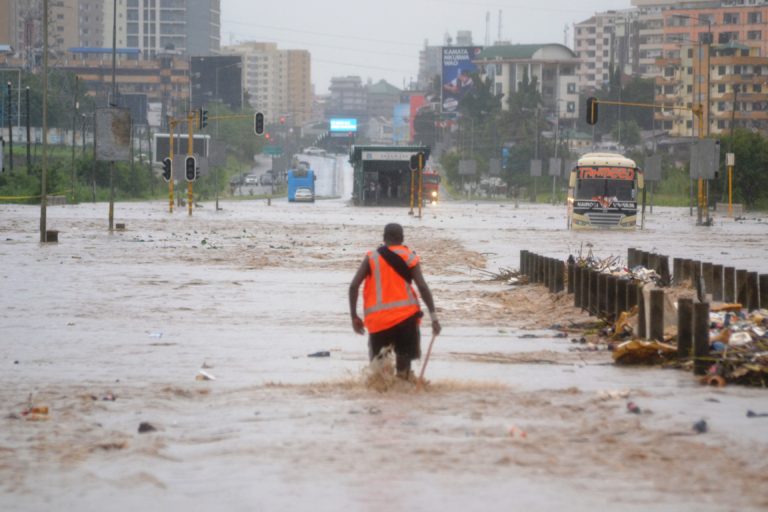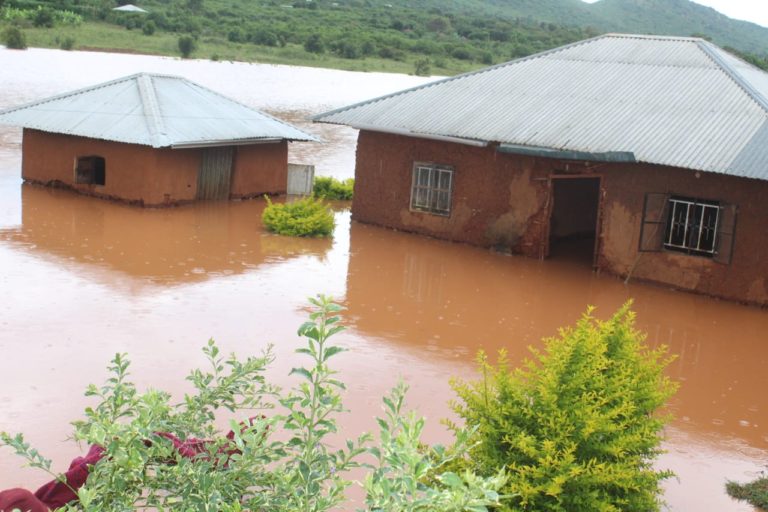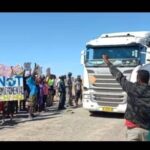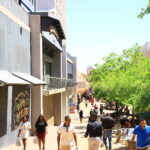Dar es Salaam, Tanzania — The breath-taking moment showing a family taking refuge on a rooftop as floodwater rapidly rushing into a submerging home at a low-lying Msasani neighborhood in Dar es Salaam—destroying furniture, carrying away cooking utensils, tells a grim story.
As heavy rains drizzled in Tanzania’s largest city last week, it triggered floods that engulfed homes, destroyed assets and infrastructures.
“I have lost everything,” said Jumbe Marijani, a resident of Msasani.

According to him, the entire neighborhood was entangled by the floods, making it hard to salvage personal belongings.
The 51-year-old father of six, who lives at the Kinondoni is among many residents who have been rendered homeless due to flooding.
“I have never seen such rains, it was horribly heavy,” said Marijani, whose family is squatting in a make-shift shack while waiting for the water to recede.
“I have incurred huge loss it will take time to recover,” said Marijani.
Africa’s Fastest Growing City
As one of Africa’s fastest-growing cities with nearly 70 percent of its six million inhabitants living in informal settlements, Dar es Salaam is highly vulnerable to flooding which often destroys infrastructures while causing water-borne diarrhea diseases.
Heavy rains twice a year, often cause floods that force thousands of the city’s residents from their homes and cause untold damage to the infrastructures.

In the Central Business District (CBD) and the Kariakoo business hub, the dilapidated sewage network often becomes overwhelmed during the rainy season—forcing effluents to overflow, exposing people to health hazards.
As authorities grapple with the impacts of climate change, local residents are bearing the heaviest burden due to logistical and infrastructural challenges.
Wastewater Dumping
For Ladislaus Mirindo, a gush of wastewater perpetually flowing from a broken sewer presents a serious health challenge to his family.
“I am quite worried for my children. They don’t have enough space to play, they oftentimes step on this dirty water,” he said.
The father of five, who lives in the Magomeni area, routinely dump the seeping sludge from his toilet in the nearby Msimbazi river.

“We do it at night to avoid being caught,” said 46-year-old Mirindo.
Most people in this squalid slum lack access to better sanitation, officials said.
“It cannot afford to hire a cesspit tanker. It costs around Tanzanian shillings 80,000(US$36) just for a single trip,” said Mirindo who works as a mason.
Rapid Urban Sprawl
As more than half of the world’s population is estimated to be living in cities, according to the United Nation projections, the share is likely to increase to 66 percent by 2050, with about 90 percent of the increase taking place in urban areas in Africa and Asia.
While rapid urbanization creates wealth and reduces poverty, analysts say it creates chaos in cities like Dar es Salaam which is vulnerable to flooding.

The smoke-belching city, which generates about 40 percent of Tanzania’s GDP and is poised to become a megacity by 2040 is exposed to many climate change risks notably flooding, sea-level rise, coastal erosion, all of which threaten infrastructure assets worth $5.3 billion, according to the United Nations.
As the number of people living in slums rises, Dar es Salaam epitomizes the growing challenge of dealing with urbanization, natural disasters, and poverty, according to urban planning experts at ICLEI, a network of more than a thousand cities working on sustainable development and resilience issues.
Vulnerability To Disasters
As authorities are grappling to resolve the city’s biggest environmental challenge: flooding, Dar’s low-lying geographical location increases its vulnerability to weather-related disasters.
According to Shahidi wa Maji, a local charity working to promote sustainable water resources, about a quarter-million people in the sprawling Msimbazi valley face serious health risks linked to the river’s “toxic industrial effluent, human sewage, chemicals and abattoir waste.
Strategic Plans
To cope with rapid urban sprawl, city authorities have redrawn a master plan for Dar es Salaam, with the aim to create a Metropolitan Development Authority that would be responsible for planning and infrastructure development including transportation and utilities.
Abubakar Kunenge, the Regional Commissioner for Dar es Salaam said government is working to identify flood-prone areas and draw up preparedness plans and strategic actions, such as installing early warning systems, to improve the people’s ability to respond to disasters and help them recover quickly.

“Our city has lately undergone a huge spatial growth, which cannot cope with the available facilities,” he told Ubuntu Times.
According to him, plans are afoot to mainstream climate change adaptation into existing urban development policies such as building stronger storm-water drainage systems in areas hard-hit by flood as well as relocating afflicted communities from flood risk areas.
Climate Proofing Interventions
However, Silvia Macchi, an associate professor of urban planning at Sapienza University in Italy who has worked on climate change adaptation in Dar es Salaam said enforcing land use policies in cities like this where informal settlements dominate is an uphill struggle.
“Rapid population growth and poor urban planning are the most significant challenges that Dar es Salaam faces.” She said adding “climate-proofing interventions should be carefully assessed against the risk of increasing unbalanced living conditions between different areas”
As part of its efforts to cushion vulnerable communities from disasters, the government relocated 654 families whose homes submerged in water during the 2011 floods.
Experts say the majority of city dwellers who live in flood-prone areas have no choice because they’re poor, even if they know their lives and property are at risk.

Most slum dwellers consider the rainy season as a temporary thing, they are willing to live with the threat of floods, soon forgetting the misery they’ve been through.
Until today, however much of Tanzania’s urban areas have been what the developmental economist Bohela Lunogelo terms “dysfunctional” characterized by poor infrastructures, lack of formal jobs, and haphazardly built slums.
Weak Regulations
Lack of planning, weak regulations, and the difficulty of obtaining title deeds for land lead cities to grow out rather than up, making commuting longer and costly.
In Dar es Salaam, about three-quarters of inhabitants live in informal settlements like Tandale, a vast, labyrinthine neighborhood of flimsily built concrete houses, where children play hide-and-seek near open sewers and flooding nearly every rainy season leads to outbreaks of diarrhea and cholera.
“My son nearly died from cholera last year, I don’t want to remember the ordeal I was through,” said Mirindo.



















